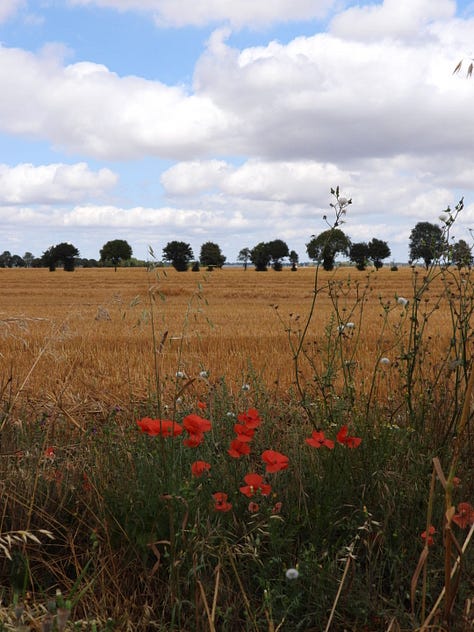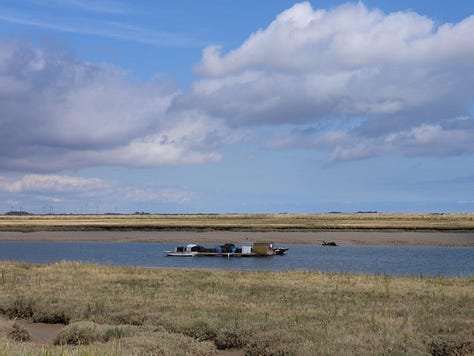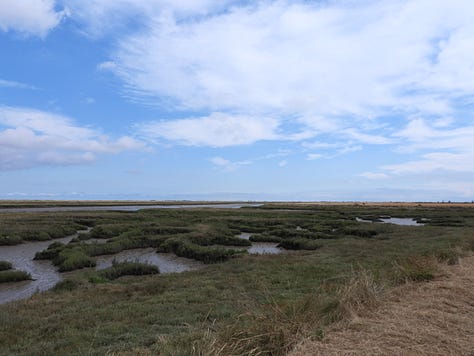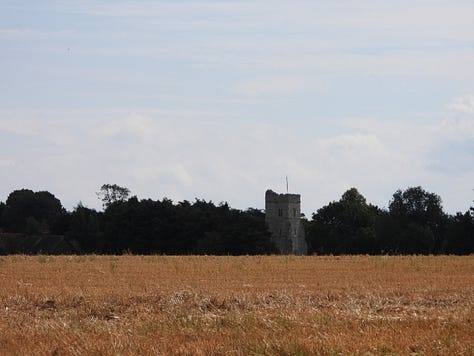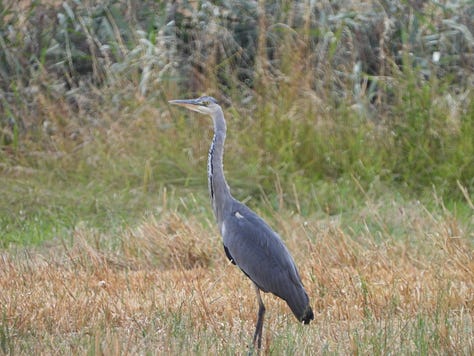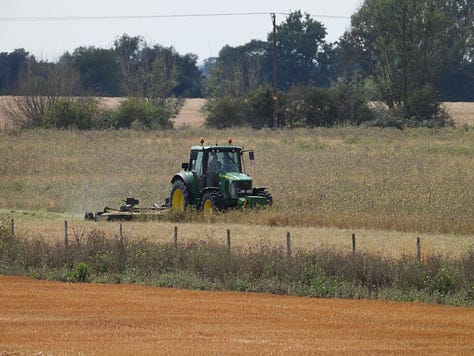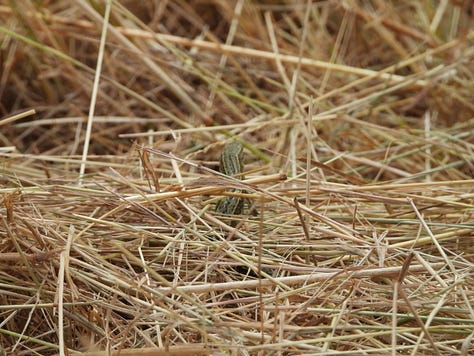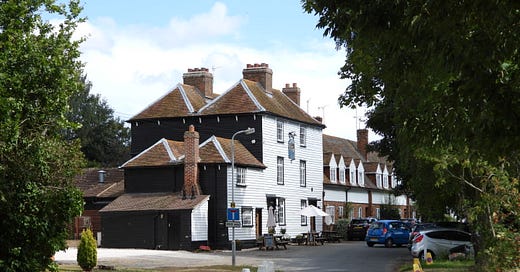Where The Smugglers Dwelt
A short walk exploring the untamed marshes near Paglesham in Essex, the wildlife and the smugglers who once lived there.
OS MAP LINK HERE
It's probably best to be upfront, so let me start off by saying that this is my first attempt at ever trying to write anything approaching a walking or travel guide. With that in mind, if any reader out there can make some suggestions on how to improve then feel free to leave a comment below and I'll bare them in mind for next time. Anyway, I do intend on writing more comprehensive guides in the future with much longer walks but since this is a first for me I figured I would stick close to home and dip my toe tentatively into the realms of travelogue writing.
Paglesham is a small village on the most easterly tip of the Rochford Hundred near to the newly anointed 'city' of Southend-On-Sea. To me, as my local area becomes increasingly urbanised and overcrowded, Paglesham's isolated and untamed nature holds a special place in my heart, a refuge of peace and quiet in an area otherwise becoming an overbearing and oppressive cesspit. I will often drive out here for some quiet contemplation but it also reminds me when my mum would drag me out to walk the dog along the seawall of the River Roach during school holidays. The majority of folk are mostly connected to the land through their memories of woodlands or nostalgic bucolic villages but growing up out here on the periphery of England's east coast, these marshes will always have a sense of home for me.
One of the main core purposes of this project is to attempt to reconnect the English people to their land and history, so it made sense to me at least, to start my foray into walking and travelogue writing here. Where I feel most at home.
So as my car trundled up the single track lane into Paglesham Church End to start this first walk, I couldn't help but notice something miraculous. Outside the row of white weatherboarded buildings, shining brightly in the late summer sunshine, were two or three benches each seating a small number of lycra-clad eco-terrorists, peacefully sipping beer from pint glasses. It wasn't the sight of men enjoying their midlife crisis that surprised me, (they're an unfortunately a common sight around these parts), but I was surprised by the fact that they were drinking there at all. This is The Punch Bowl, a pub that has existed here since the early 1800s.
The reason for my surprise goes back to to 2018 when the pub was brought by a new owner who immediately shut it down citing a 'lack of business' before converting it into private housing. Fortunately, a new owner purchased the property three years ago and has thoroughly renovated the place and reopened it as a pub at the start of 2024. I have driven past it a few times this year and not noticed the signage replaced, but seeing the patrons outside enjoying a drink was a welcome sight. With the pub industry in the state that it's in, it's not every day you see an old traditional pub rise up from the ashes and start trading again. The pub has an interesting historical relevance which I'll get on to in a short while.
In any case, after my shock subsided, I continued on and parked my car outside of St Peter's Church and got myself ready. It's worth noting at this point that if you're walking out on the sea walls, it is an imperative that you dress appropriately for the weather, not so much on a short walk like this but certainly if you're entertaining a longer hike. You will be exposed three or four meters above everything else in the landscape. In the winter you will be windswept, your extremities will freeze and in the summer, as I can attest from this recent trip, you will bake under an unrelenting sun.
After you have kitted yourself out in the necessary clothing, it's time to head off. Heading east along the lane it comes to dead end, the path to take actually involves walking along someone's driveway for a few metres, don't worry this is correct and it soon veers to the left and takes you along a narrow path between the gardens. After a while the path opens out to reveal the flat and open countryside, a landscape Essex is best known for. The route eventually leads to some old barns and then follows alongside a lane for half a mile before taking you down towards the seawall where you should turn left. Once you're on the seawall you needn't worry too much about navigation as there is no way to get lost here!
After a while you'll soon come across a platform in the Paglesham Creek, the remnant of a once bustling oyster industry which flourished here before the second world war. Unfortunately, hundreds of years of collecting shellfish in this area was more or less put to an end when pollution and disease made it largely untenable. I'm sure the public's squeamishness around seafood these days doesn't help the situation, either.
In the book "The Last Stronghold of Sail" written by Hervey Benham first published in 1948, the author recounts his experience of watching the old oyster dredgers working this stretch of water in the traditional manner, writing;
"I have sailed round to that happy yachtsman's haunt, Paglesham, for a week-end cruise. And there, just below the moorings, five Mersea smacks are dredging. They come round here for a week and hae to put in forty-five hours' work.
As tide and weather are kindly this evening they are working late. They are dredging only a short stretch, and it is lovely to watch them manoeuvring together at such close quarters. One by one they sail up tide - one long leg, one short - and then down comes the staysail, and over go the dredges, and they come slowly working down, hauling and throwing their dredges, broadcasting the culch back in the water after each haul. One by one as they finish their last haul they break off, gather in the mainsheet, and away each dodges among her fellows as she tacks back to the start again. There are always two or three dredging and two or three sailing back.
Nowadays they pay more here for smacks with motors, and instead of this sort of maritime country-dance in which these sailing-smacks are indulging they steam up and down like a procession of schoolgirls out for a Sunday walk. They get more work done like that, but as I watched the sailing-smacks sheering and yawing down, laid right across the tide, I realised what a much wider path a smack dredges in this way than when she follows a straight course under power, dredging only two narrow tracks with port and starboard dredges.
I rested my chin on my hatch and watched them for hours that day, till the tide was done, and they all brought up in a cluster. Is it not such memories as these, stored up in happier days, that sustain us through times of grey strain and blank living?"
Whilst the oyster business was one of the biggest trades in Paglesham in the past, there was a yet more lucrative business that was seen in these parts; smuggling. The villagers would take their sailing vessels to Dunkirk where they would load up on tobacco, liquor and tea in an attempt to get around Customs officers to sell on their wares for good profit. The Essex coastline, with it's endless number of creeks and inlets, made the perfect environment for hiding men, boats and cargo from the coastguards. The most famous of these smugglers was a man known as William 'Hard Apple' Blyth, a supposed patron of the Punch Bowl pub, who lived something of double life, existing as both an outstanding citizen by day and hardened criminal by night.
Local folklorist Eric Maple recounted the tale of William Blyth in his book "Old Wives Tales", writing;
"In the Essex of my own youth fascinating tales were still told of smuggling days and smuggling ways, the best of them connected with local folk-hero, Blyth of of Paglesham, a marshland village, whose passages of arms with authority are still remembered in the area where he lived. His story, which is typical of many, was told to me by an "oldest inhabitant" over eighty-seven years old, who had discovered folktales to be an "open sesame" to innunmerable glasses of beer.
Blyth, king of smugglers, was a leading citizen, churchwarden and friend of every squire and parson for miles around. Officially Paglesham village was in the Oyster business. Unofficially most of the villagers were smugglers filling in their time between operations with games of cricket on the marshlands, with their cutlasses stacked against the wickets on the offchance that Revenue men should pass that way. Quarter was seldom asked or given, but as with all inveterate enemies, there grew up a curious empathy between the hunters and the hunted. They still tell of the day when Blyth was caught red-handed with a cargo of liquor aboard his boat. Blyth gallantly offered the services of his own men in transferring his smuggled cargo to the Revenue cutter. The work began, thirsty work, and when Blyth suggested that they could all do with a drink, nobody argued, and soon the Revenue men were drunk. Blyth and his men then overpowered them and transferred not only his own but all the other confiscated liquor into his hold and then sailed back to the safety of Paglesham village.
Not until the middle of the nineteenth century was an effective system of coastguard service in operation along the marshlands, but by then it was too late to trouble churchwarden and leading citizen Blyth. He died in 1830 mourned by all and rich in the honours of a successful life."
As I continued along the sea wall path, I came to regret my decision to wear sandals. In the few days beforehand the long grass had been cut and I found that trudging through the loose grass clippings made hard and occasionally painful work. That said, the loose grass created a perfect environment for Common Lizards who were no doubt taking advantage of the network of cover and the multitude of insects teeming within it. I saw at least six of them which shifted incredibly quickly away from me the second they detected me. I did try and gently grab one to get a photograph but they were too quick for me - so I'll have to make do with an awful photograph for proof. Nevertheless, this does indicate how healthy the ecosystem is along the Essex coastline. Indeed, the wildlife here does well being out on outskirts in this sort of liminal space. There are many endangered and struggling species which make their homes along here, most notably the Curlew which always turn up in quite large numbers during the winter months. On the other side of the Paglesham Creek lies the RSPB's Wallasea Island rewilding project, which has proven to be a great success and is due to be enlarged over the next few years with a second phase - which is great news.
You may notice on your travels that this route is directly underneath the flightpath for Southend Airport. Ironically, given the nature of the history in this area, the two aircraft I saw coming into land when I did this walk were operated by HM Coastguard, although the coastguards of this day and age seem to facilitate rather than prevent the influx of certain contraband in this day and age.
Continuing on, you'll likely notice the top of St Peter's church tower appearing above the camber of the field beside you, but in case you are in any doubt, when you get to the end of the Paglesham Creek the path will split, and here you need to turn left back towards the village. As you follow a bit of paved road along you'll end up appearing out of a hedge right next to the pub and here, we have ultimately ended our walk. I did pop in for a beer at this point, which incidentally aren't that badly priced at the point of me writing this (all pints being £3.50) but if you are using this walk, given the importance of keeping these places open, I hope you'll consider supporting them with your custom.
That pretty much ends this short walk. I probably have many improvements to make on my writing - hopefully that will come with time, but if you have any suggestions or constructive feedback, I hope you will leave it below.
